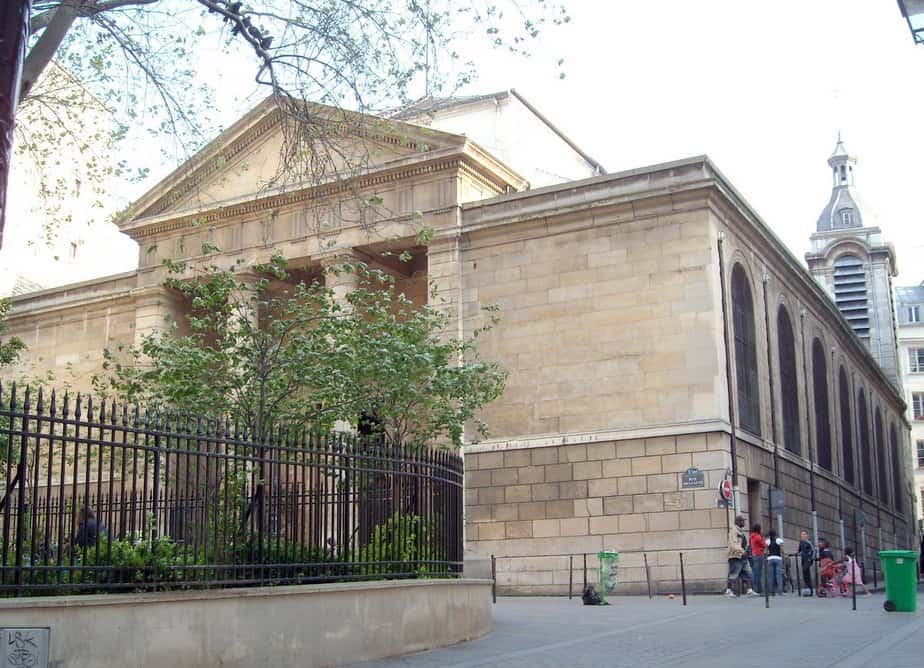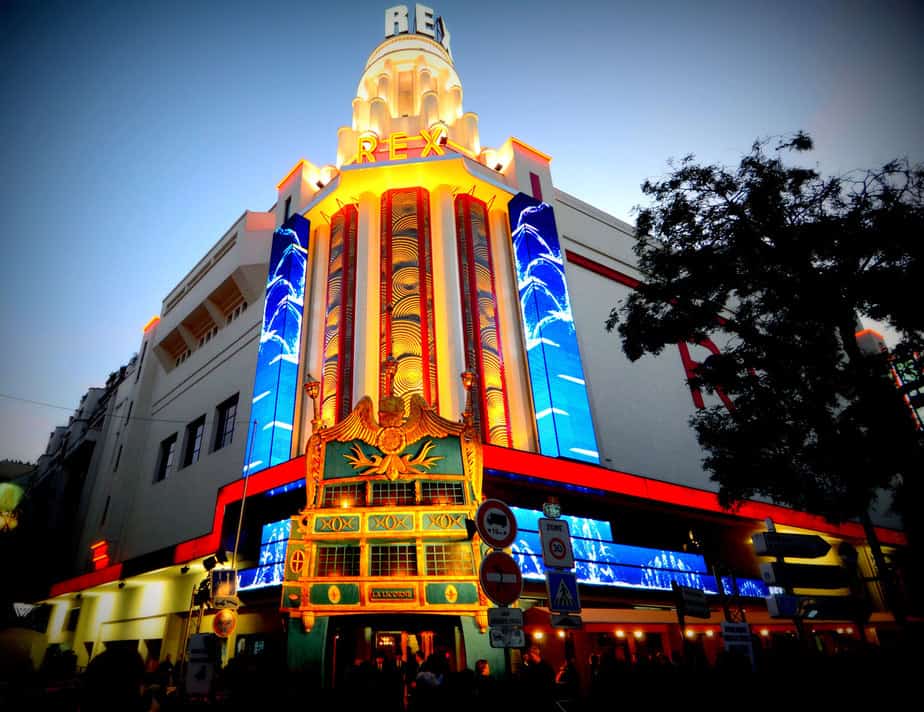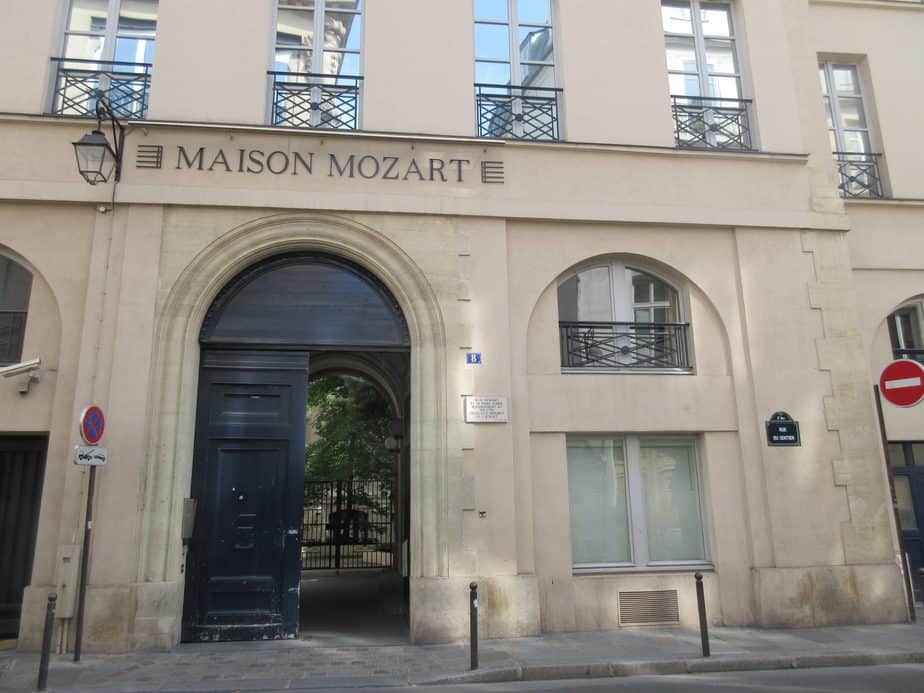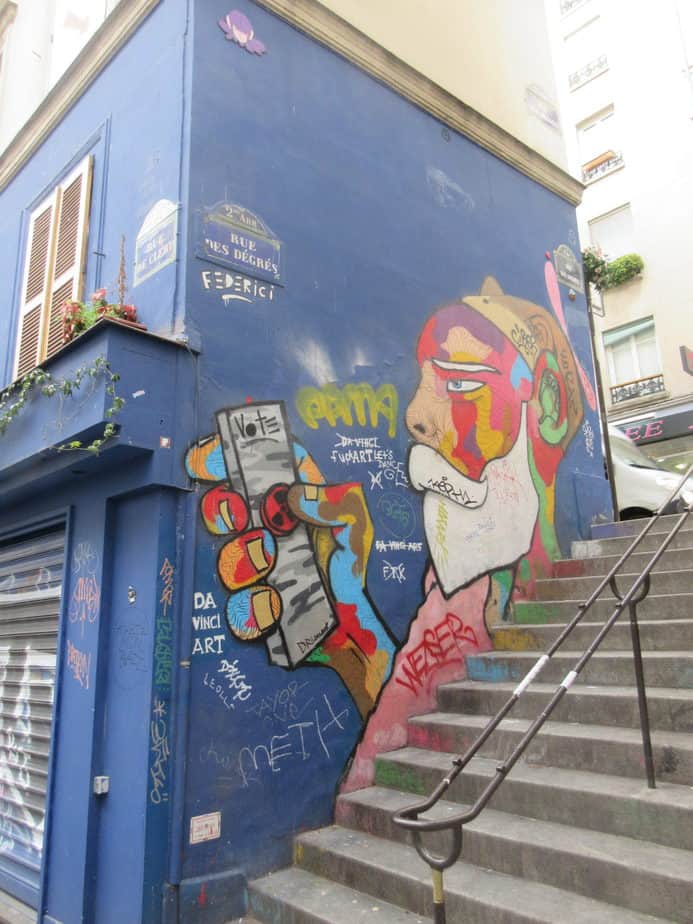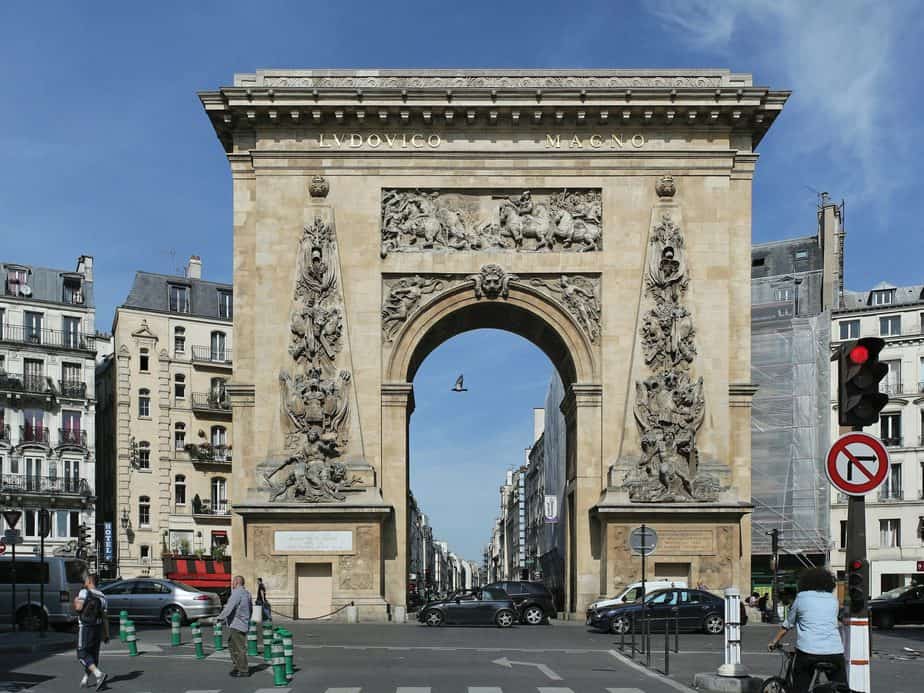A Walk in the Sentier Distict of Paris
Updated by Vanessa M in June 2023.
The center of Paris is full of hidden gems. Apart from the world-famous area that attract the crowds, it is full of picturesque districts, both old and trendy. Le Sentier is one of them.
Located in the dynamic 2nd district (“arrondissement” in French), it is delimited by the rue Montmartre in the west, the boulevard de Sébastopol in the east, the boulevard Poissonnière et de Bonne Nouvelle in the north and the rue Réaumur in the south.
Get off at the station Bonne Nouvelle in the north of the district or at the station Sentier in the south and let’s discover the Sentier!
Read also; The 15 Most Beautiful Covered Passages in Paris (with a Map)
The fascinating history of the Sentier
The Sentier started with the building of the city walls during the Hundred Years War. A hamlet appeared in the XVth century at the gate Saint-Denis.
A district born out of a rubbish dump
It was famous for a hill. Not a natural hill but a hill made of garbage! In these medieval times, where bins and sewers did not exist, some inhabitants had taken the habit of throwing their waste against the old wall, always in the same spot. This hill reached 10 meters and a windmill was built on top of it!
This hamlet received the name of “Villeneuve sur Gravois”, which means literally “the New City on Gravel”.
There were some houses, surrounded by fields and vineyards. Some trails led to this hill. The French word for “trail” is “sentier”: we think these trails gave its present name to the area. Another theory says that the name of the district comes from the walk around the city walls.
In 1591 the hill was destroyed. Paris was in rebellion against the king Henri IV and it was feared that he could use the hill to set up his canons.
In 1628 the church today called Notre-Dame-de-Bonne-Nouvelle was built. It was restored in the beginning of the 19th century. Sober and beautiful, it contains some beautiful paintings from renowned artists such as Philippe de Champaigne.
The architecture of the 17th and 18th century is a witness of this renewal of the district.
In its border, Le Sentier also has streets dating from the big “Haussmanian” renovation of Paris of the middle of the 19th century.
A republic of beggars and criminals
The area became famous for another reason in the 17th century: it was the main Court of the Miracles in Paris. This counter-society, that reached a population of 30 thousand inhabitants, lived in a fortified slum. They had a king, the “Grand Coësre”, their laws, their taxes, their slang and a strong hierarchy.
Defying the authorities by refusing to pay any tax, they had two kind of activities: begging and stealing. Beggars and thieves were actually trained for more efficiency and the thieves even had to pass an exam to prove their ability!
The beggars pretended to be invalid or horribly sick to inspire the charity of the Parisians. Once back in their lair, they stopped pretending and it seemed that their invalidity or disease had suddenly stopped: thus the name “Court of the Miracles”.
Louis XIV, the prestigious Sun-King, could not tolerate this challenge to his authority. He appointed the first police lieutenant of Paris, La Reynie, with a special mission to destroy this place.
In 1667 he besieged it and warned its population that the last 12 beggars to be taken would be hanged. His threat caused a panic: the beggars ran away.
The Parisians, who had suffered from insecurity, called the destruction a “good news”, “bonne nouvelle” in French. This expression gave his name to the nearby metro station.
Read also; 10 Best Neighborhoods for Food in Paris
The clothing district
Since the 17th century, many craftsmen had settled in the area. There was up to 60 workshops in the Rue de Cléry. They were mostly carpenters but they moved to the east of Paris in the 19th century.
They were replaced by ready-to-wear manufacturers and distributors. This specialization grew in the 20th century and reached his peak in the 1980s.
They attracted many waves of immigrants in France: Jews, the Turks, Armenians and many Asians. It was made famous in 1997 by a humoristic movie La Vérité si je mens. It depicted the life of some Jews from North African origin.
Today, the Chinese community is progressing in the clothing district. However, the district diversified with many data-centers and start-ups linked to the telecommunications and digital transformations of the companies. It got the nickname of “Silicone Sentier”.
What to do in Le Sentier ?
1. People-watching
The clothing industry does not work only inside the little boutiques: they spread in the streets. One can even say that they sometimes use the streets as an additional warehouse: stocking boxes of clothes ready to be loaded in the trucks. It is therefore a good place to observe these workers.
The clothing district is not to be understood as a shopping district. Even if many boutiques are opened for consumers, you will see written on many of them “Vente en gros” or “Aucune vente au detail”, which means that it is about wholesale trade.
The businessmen designing the clothes are located in this central area in order to be close from the world of fashion in Paris. You will see these businessmen, who have the reputation to speak loud on the phone in the streets, and the fashion designers dressed more like artists.
On Saturday many stores are closed because the Jewish owners respect the Shabbat.
The busiest day is Monday. Then you might see many carriers and delivery workers, often hired directly in the streets to achieve one specific task. It is also the day where the little streets are often blocked by these deliveries, not adapted to the narrowness of the streets.
The wholesale businessmen coming to buy in Paris are from very diverse origins. Many are French from others regions, bringing there the latest trends decided in Paris. You will also find Americans, Japanese, Chinese, or buyers from the Emirates.
In Le Sentier, you can expect more social diversity than in many other central places in Paris. You have first all these workers of the clothing industry: some successful businessmen but also many poor immigrants who work as carriers.
Some prostitutes come to work in the streets, coming from the nearby Rue Saint-Denis.
Meanwhile, the “bobos”, roughly equivalent to the hipsters, who live in the broader second district, are also more and more present.
2. See the landmarks
I have myself a taste for wandering in the old streets without a plan. But it can also be great to have some ideas in mind, to be sure not to miss anything.
Let start with the landmark that you can visit.
First, you have the church Notre-Dame-de-Bonne-Nouvelle already mentioned.
On the northern border of Le Sentier, 1 boulevard Poissonnière, you can also visit the most famous Parisian cinema: the Rex. Opened in 1932, the original decoration was kept and is today classified.
The Rex proposes a visit called “the Rex Studio”. They propose to bring you behind the scenes of a film with an interactive audio tour that will make you discover rooms like the principal’s office, the projection room etc. They will make you feel part of the shooting of a movie. They have an audio-guided tour in English.
Of course, you can also get there only to watch a movie in original version. The Rex has a huge room that can welcome 2 800 spectators. It is specialized on the premiere of new movies and also regularly organize “marathons” where you can, for instance, watch the 3 Lord of the Rings in a row.
What I like the most in Le Sentier is the huge vegetalized wall at the angle between the rue d’Aboukir and the rue des Petits-Carreaux. It is what you can see in the cover picture of this article. It welcomed 7 600 plants from 237 species on a 25m wall.
It improves the quality of the air and provides a thermal protection. This green space is more than welcome in an area that lack some nature.
In the number 8 of the rue du Sentier stayed Mozart and his mother in 1778. She even died inside when this place was an inn.
Read also; The Best Walking Route Through le Marais (with a map)
The building that you can see was built later as a part of a “hotel particulier”, a mansion of the nobility built before the Revolution.
The main entrance of this mansion is the 19 rue de Cléry. It belonged to Elizabeth Vigée-Lebrun, a woman painter that was famous for her portraits of Marie-Antoinette and her court.
The Passage du Caire is the oldest covered passage in Paris. It is not nearly as fancy as the ones you can discover in the Hidden Gems tour. It contains mostly clothing shops.
It was opened after the entrance of the French troops led by Napoleon in Cairo in 1798. This expedition also explain for all the Egyptian-related names in the district.
The visitor coming from the Place du Caire is welcomed by 3 statues of the Egyptian goddess Hathor.
At the end of the Rue de Cléry, you can find an urbanistic curiosity: the smallest street in Paris. It is only made of a staircase, called the Rue des Degrés. There is no door, no window on this street thus nobody has an address on this street.
Just at the northern border of the Sentier, don’t miss the monumental Porte Saint-Denis. The king Louis XIV built this arch of triumph in a spot that used to be a gate of Paris within the city walls.
It was built in 1672 by François Blondel and Michel Anguier and funded by the city to celebrate the glory of the king. He had just added two new territories to France: Alsace and Franche-Comté. You can read on the façade “Ludovico Magno” which means “Louis the Great” in latin.
This gate was very important for the monarchy as it was on the way to the city of Saint Denis in the suburbs. The bodies of the deceased kings were accompanied by large processions to be buried in the basilica Saint-Denis.
Where to eat and drink ?
Among the many addresses in Le Sentier, I have 3 recommandations.
To drink, among the many bars with friendly atmosphere, you can try the Hoppy Corner. This bar is specialized in craft beer with a very large choice. You can taste them with some tapas in a nicely decorated room. It is situated on the 34 rue des Petits Carreaux.
To eat you can try Pollop, 15 rue d’Aboukir. It is a restaurant and a bar with a modern-design from Northern Europe. It serves French Food but often with an Asian taste. Count 20 euros for lunch and 35 for dinner. You can see the menu here.
Another possibility is Edgar, 31 rue d’Alexandrie. 3 places are owned by the same people on the same plaza: the restaurant Edgar, good and pricy, a hotel and an Italian restaurant the Baretto. The restaurant Edgar is a brasserie specialized on seafood. What constitutes the best advantage of this restaurant is his terrace on the little plaza. You can check it out here.
Read also; Where to Stay in Paris: The 15 Best Neighbourhoods in Paris
5 Best Hotels near Sentier
Hôtel Crayon Rouge by Elegancia

Photo by Chan Walrus from Pexels
The Hôtel Crayon Rouge by Elegancia is in a superb location, just a 15-minute walk from the Louvre Museum and the Centre Pompidou. You may relax with a drink in the bar/lounge, and breakfast is served daily.
This upscale hotel is also only a 5-minute drive from the Palais Garnier and Notre Dame. Fellow travelers comment about the friendly personnel and convenient location. The Crayon Rouge is more than a hotel; it is the home of a Parisian artist and devoted hoteliers.
As a result, it is rather logical that it becomes one of the first completely privatizable establishments. The house is only a 6-minute walk from the Palais Royal-Musée du Louvre Metro Station and a 7-minute walk from the Louvre – Rivoli Station.
Practical information
address: 42 Rue Croix des Petits Champs, 75001 Paris, France
hours: open 24 hours
website: HÔTEL CRAYON ROUGE
Hôtel Bachaumont

Photo by Life Of Pix from Pexels
The Hotel Bachaumont, located in the Montorgueil area, offers a true Parisian living experience. Dorothée Meilichzon created an intimate ambiance in the center of a sophisticated environment with a contemporary design and 49 various rooms influenced by the usual Parisian environment.
The hotel, restaurant, and bar are concealed down a short lane in one of Paris’s most vibrant and trendiest neighborhoods. You can relax at the bar and enjoy the selection of Hugo Simonet creations and selection of cocktails inspired by floral and fruity scents to be relished in a hushed, intimate setting at the Bar Chaumont.
Without fuss, with a desire for elegance and refinement, the Restaurant transforms itself throughout the hours to catch the moments of the day and the moods of the neighborhood. It is a welcoming place open to everybody.
Practical information
address: 18 Rue Bachaumont, 75002 Paris, France
hours: mon-sun; 2 pm-12 pm
website: HOTEL BACHAUMONT
Hôtel Providence

Photo by Rene Asmussen from Pexels
The Palais Garnier and Centre Pompidou are about a five-minute drive away from Hôtel Providence. Providence, which provides French cuisine and is available for lunch and evening, is a good option for hungry visitors.
A bar/lounge and a terrace are among the features of this upscale hotel. The Providence is related to Brasserie Barbès, probably Paris’ most popular nightclub, as well as a dozen other of the city’s greatest bars and restaurants.
The hotel’s café-brasserie is authentic, opening onto a beautiful terrace, and the cocktail bar elevates the Providence to the status of a destination. Most travelers appreciate the location for sightseeing and the short walk to public transportation: Strasbourg – Saint-Denis Station is 2 minutes away and Bonne Nouvelle Station is 6 minutes away.
Read also; FOODS OF PARIS: THE GRAND TOUR
Practical information
address: 90 Rue René Boulanger, 75010 Paris, France
hours: mon-sun; 7 am-11 am
website: HOTEL PROVIDENCE
Hôtel Étienne Marcel
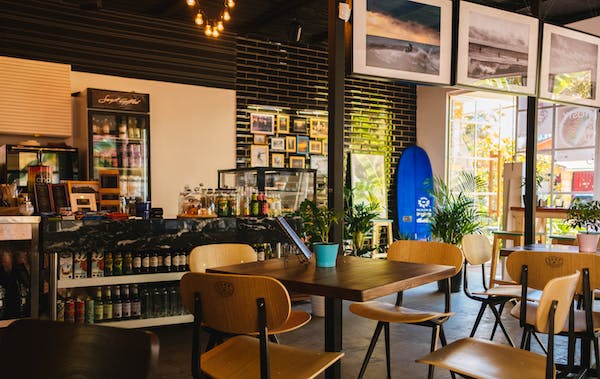
Photo by Igor Starkov from Pexels
The one-bedroom Etienne Marcel Sweet Inn apartment is located in the stylish, dynamic Les Halles neighborhood, right in the center of Paris. Its interior design creates a smart urban hideaway with large picture windows, eccentric wall art, and slick oak floors.
Flowing drapery lends a sense of classic beauty, while playful cartoon decals add a modern twist. Everything you need for in-house dining is available in a fully equipped kitchen. Free WiFi, cable TV, hotel beds and linens, luxury toiletries, and a Nespresso machine are among the premium features.
The Pompidou Center, which houses the National Museum of Modern Art, is only an 8-minute walk away, as are the Louvre (7 minutes) and the Royal Palace and Gardens (10 minutes). The Etienne Marcel metro station is a short walk away.
Practical information
address: Rue Montmartre 26 1 , Les Halles – Etienne Marcel (1er), Paris, 75001, Paris, France
hours: mon-sun; 4 pm-11 am
Hôtel National Des Arts et Métiers

Photo by Dmitry Zvolskiy from Pexels
The Hotel National des Arts et Métiers is an amazing and one-of-a-kind addition to the bustling neighborhood in which it is located. It is a feat of modern architecture and innovative design hidden beneath a traditional Haussmannian front.
The 64-room facility, restaurant, and bar were created utilizing the finest materials and produced by artisans in the French savoir-faire style. Guests can dine at the onsite Italian restaurant, Il Ristorante National, which has seating indoors and on the terrace, or sip a cocktail at the rooftop l’Herbarium cocktail lounge, which has views of the Parisian metropolis.
Guests are also welcome to use the exercise facility and relax with an onsite beauty treatment. The Louvre Museum, Notre Dame Cathedral, and the Opéra Garnier are all nearby. Tuileries Garden is 1.8 kilometers away.
Practical information
address: 243 Rue Saint-Martin, 75003 Paris, France
hours: mon-sun; 2 pm-12 am
website: HÔTEL NATIONAL DES ARTS ET MÉTIERS
***
As you have seen, you have a lot to do and see for such a small district. If you take a tour to discover the center of Paris, you can suggest the guide to take a little detour through Le Sentier, you will not regret it!
Planning a trip to Paris ? Get ready !
These are Amazon’s best-selling travel products that you may need for coming to Paris.
Bookstore
- The best travel book : Rick Steves – Paris 2023 – Learn more here
- Fodor’s Paris 2024 – Learn more here
Travel Gear
- Venture Pal Lightweight Backpack – Learn more here
- Samsonite Winfield 2 28″ Luggage – Learn more here
- Swig Savvy’s Stainless Steel Insulated Water Bottle – Learn more here
Check Amazon’s best-seller list for the most popular travel accessories. We sometimes read this list just to find out what new travel products people are buying.






